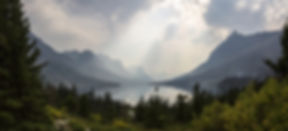

Call Us Now!
406-261-8865
Spotted Knapweed





Spotted Knapweed
(Centaurea stoebe)
Description:
Spotted Knapweed is a short-lived perennial or biennial plant that can grow up to four feet in height. This plant has a strong taproot as well as lateral roots. The rosettes of spotted knapweed are grayish-green in color with leaves that are up to six inches in length. Leaves are oblong and wider at the tip, deeply lobed and in early stages, covered with a layer of fine hairs. Stem leaves are alternate and may be slightly lobed or even unlobed. Each rosette may produce many stems. This plant will adapt to mowing and grow shorter and shorter to bloom at very low heights, which is why this plant can vary in height from two inches to four feet. Stems and leaves are a blue-green color but the short, thin hairs on the leaves can give the plant a silver-gray cast. One flower pink to pinkish-purple flower grows on each stem. Flowers are surrounded by oval bracts with black tips, thus the name Spotted Knapweed. One plant can produce up to 300 flower heads, thus producing up to 140,000 seeds. Flowers, which bloom from June to September, resemble both Canada thistle and the popular bachelor button, a close relative. Seeds are oval, brown and up to 1/8 inches long with a short tuft near one end. Reproduction is primarily by seed, but can sometimes start shoots from a lateral root system. Dead plants that have gone to seed are readily identifiable by the tall cream colored to gray stalks and white to gray seed heads.
Key Features:
Pink to purple bachelor button-looking flowers, bracts with black tips directly under the flowerhead and deeply lobed lower leaves with fine, cobweb-type hairs.
Habitat:
It has a preference for sunny, arid conditions in course soil and especially in disturbed areas. Spotted Knapweed is a highly adaptable plant and can be found just about anywhere. It can be found at various elevations, in moist or dry conditions, is shade tolerant but most often can be found in sunny areas on well drained or gravel/sandy soils.
Currently found in the following counties:
Spotted Knapweed has been found in all counties in Montana, but Glacier, Golden Valley, Mussellshell, Phillips and Wibaux.
IWM
-
Cutting
-
Herbicide
-
Bio-control/Insects
-
Hand Pulling
-
Targeted Grazing
Interesting Facts:
Spotted Knapweed produces its own natural herbicide called "catechin" that eradicates plants around it. Spotted knapweed has had twelve different biocontrol agents (insects) released to manage the plant, perhaps the most famous of which is the Cyphocleonus achates, or root boring weevil. Seven of those are currently present in Montana.
Commonly Confused Plants:
-
Other Knapweeds
-
Cornflower
-
Bachelor’s Buttons
-
Hoary Aster
-
Canada Thistle
Photo Credits: Matt Lavin; Diana Ericson; Diana Ericson; Matt Lavin; Ryan Pimiskern, rpimiphoto.wordpress.com;